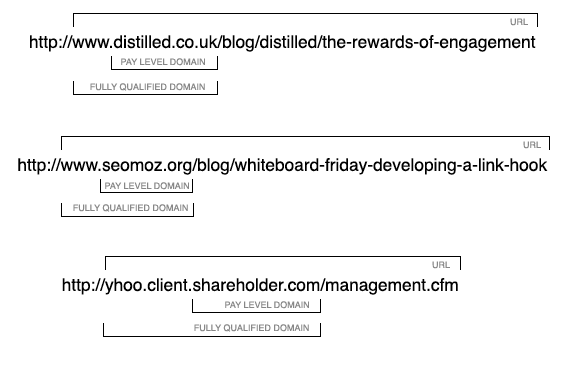What the heck should we call *.domain.com?
If you've been playing around with Linkscape a little, you've probably seen our attempts at creating a lot of new naming conventions for metrics and features that were previously the exclusive realm of web indexing researchers, information retrieval scientists and search engineers. Things like mozRank & mozTrust (mT) have seemed to work out fairly well so far, but our testers and members have struggled a bit more with mozRank (mR) vs. Domain mozRank (DmR) - one is for a page while the other applies to a domain - and been seriously confused about FQDs vs. PLDs. Let's address this issue. As search engines scour the web, they identify four kinds of web structures on which to place metrics:

However, to date, it's still one of the biggest puzzlers I see when folks are faced with the data, and while I love that we can be so robust and detailed, it's no fun dealing with information overload. There are all sorts of important metrics that can be applied to 2nd or 3rd level domains, but if even the savviest of SEOs struggle to understand/interpret/apply this information it's time for a change.
For example, according to a Linkscape report for SEOmoz:
- http://www.seomoz.org - the page/URL has 41,741 links from 3,281 FQDs
- www.seomoz.org - the Fully Qualified Domain (FQD) has 11,734 other FQDs linking to it
- *.seomoz.org - the Pay-Level Domain (PLD) has 10,039 other PLDs linking to it
Being able to quickly and easily understand these differences is important for comparisons, reporting and SEO implementation, but it's a challenge to explain, so I figured I'd put it to our community - what is the best way to describe 2nd vs. 3rd level domains? What should we be calling them and how can we explain it in an easily digestible but granular fashion?
Please use your thumbs to reward answers you like (I know I will, especially since it's nearly Christmas Eve!).
www.seomoz.org
published @ December 24, 2008